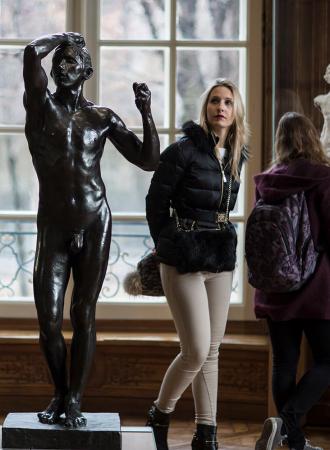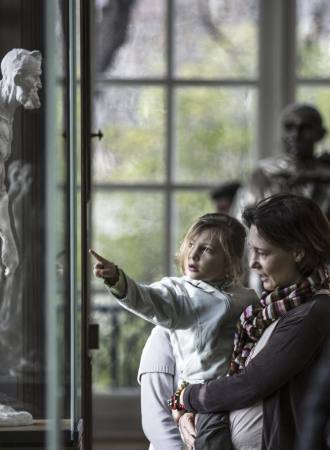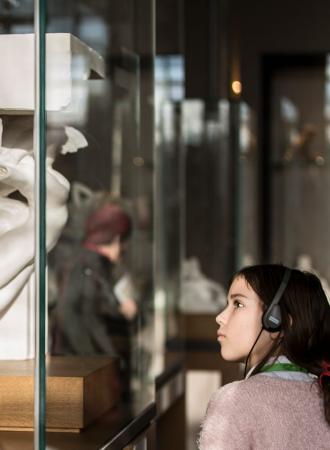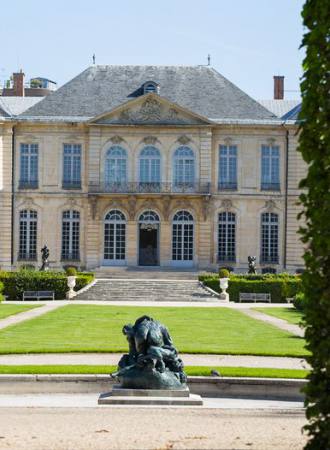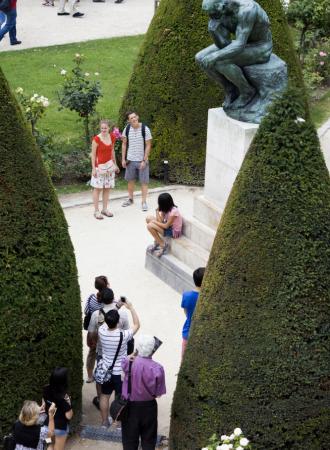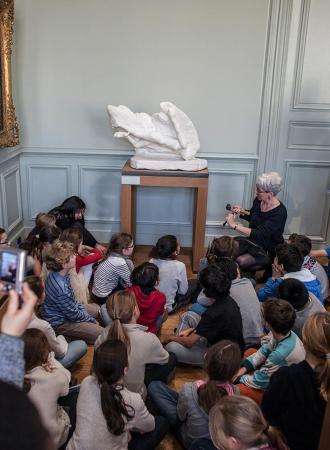Search the site
Rodin and the Cambodian Dancers
His Final Passion
This exhibition illustrates the extraordinary encounter of Rodin with the aesthetics of Khmer dance, which he discovered on the occasion of the official visit to France by King Sisowath of Cambodia in 1906.
Rodin was immediately fired by a passion and enthusiasm for the aesthetics of this art and the purity and grace of its expressions. He left everything suddenly to follow the dancers of the royal ballet to Marseille, from where they would embark on their return to Cambodia.
In just one week, he made about one hundred and fifty drawings, re-transcribing or interpreting the ballet poses, with an obvious fascination for the arms and hands of the dancers. These drawings were later highlighted with watercolour, creating coloured harmonies of a rare refinement.
The first performance of the Cambodian royal ballet took place in the context of the Colonial Exhibition in Marseilles. Sisowath 1st had just been crowned King of Cambodia when he undertook the first trip ever to be made by a Cambodian sovereign to France, which had controlled Cambodia since June 1884. This official visit occurred at the height of French colonial expansion. Previously, the Universal Exhibition of 1900 had attracted 48 million visitors! The organisers realised what a tremendous impact this event made on the public, and it was soon adopted as the main tool for colonial propaganda. At the exhibition in Marseilles, the area devoted to Indochina was the largest of the seven sections.
When Auguste Rodin met the troupe of dancers for the first time in July 1906, during their brief visit to Paris for an exceptional performance at the Pré Catalan theatre, it was like a revelation to him. He was struck by the timeless and universal nature of the movements of this dance, which transformed this relatively unknown form of art into a manifestation of the universal principle of the “unity of nature” through time and space.
This encounter came as such a shock to Rodin that he immediately started a first series of drawings. However, the dancers were expected elsewhere, and Rodin therefore dropped everything to follow them to Marseilles, not even taking with him the necessary paper and drawing material. On arrival, he executed a series of studies of movements and female draperies that are considered to be among the leading lights of his art.
“They (the dancers) made the antique live in me (…) I am a man who has devoted all his life to the study of nature, and whose constant admiration has been for the works of antiquity: Imagine, then, my reaction to such a complete show that restored the antique by unveiling its mystery”.
The important place Rodin gave to this unique series, exhibiting it in the most prestigious art centres, demonstrates his conviction that he had acquired sufficiently elaborated graphic skills to achieve through drawing - on an equal footing with sculpture - the divine sensuality he venerated so much in the antique. This is the first time that this complete and exceptional series is on public display.
Exhibition(s) location(s)
Musée Rodin
77, rue de Varenne, 75007, Paris
Dates
From June 16 to September 17, 2006

